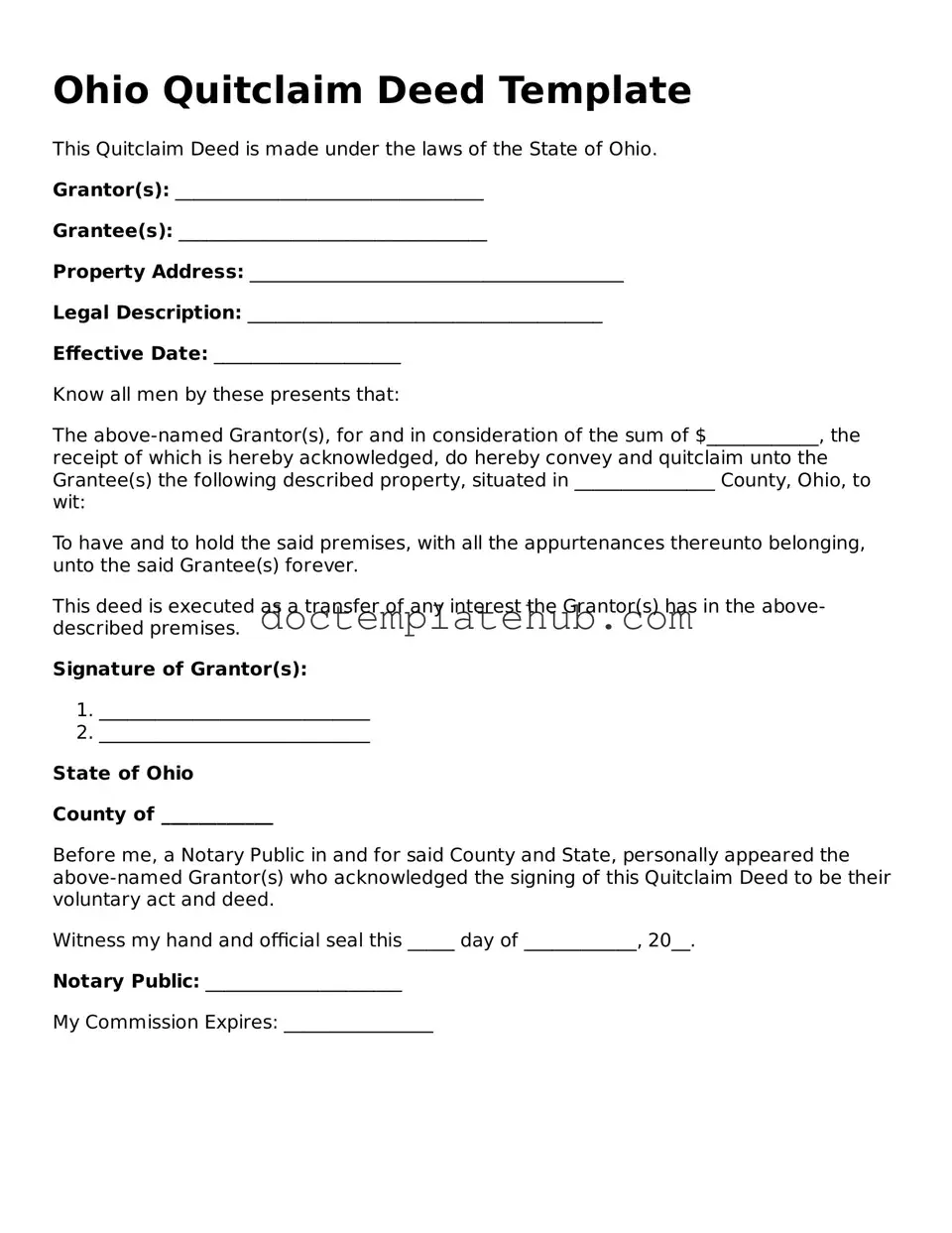What is a Quitclaim Deed in Ohio?
A Quitclaim Deed is a legal document used to transfer ownership of real property in Ohio. This type of deed conveys whatever interest the grantor has in the property without making any guarantees about the title. Essentially, it allows one party to relinquish their rights to the property to another party. It is commonly used among family members or in situations where the parties know each other well.
When should I use a Quitclaim Deed?
You may consider using a Quitclaim Deed in various situations, such as transferring property between family members, adding or removing a spouse from the title after marriage or divorce, or transferring property into a trust. It is a straightforward option when the parties involved trust each other and do not require a warranty on the title.
How do I complete a Quitclaim Deed in Ohio?
To complete a Quitclaim Deed in Ohio, you will need to provide specific information, including the names of the grantor and grantee, a legal description of the property, and the date of the transfer. After filling out the form, both parties must sign it in the presence of a notary public. The notarized deed must then be filed with the county recorder's office where the property is located.
Is a Quitclaim Deed the same as a Warranty Deed?
No, a Quitclaim Deed is not the same as a Warranty Deed. A Warranty Deed provides guarantees about the title and protects the grantee against any claims or disputes regarding the property. In contrast, a Quitclaim Deed transfers whatever interest the grantor has without any warranties or assurances. Therefore, it is essential to understand the differences when deciding which type of deed to use.
Are there any fees associated with filing a Quitclaim Deed in Ohio?
Yes, there are fees associated with filing a Quitclaim Deed in Ohio. The fees can vary by county, so it is advisable to check with the local county recorder's office for specific amounts. Additionally, there may be costs related to obtaining a notary public or any other related services.
Do I need an attorney to prepare a Quitclaim Deed?
Can a Quitclaim Deed be revoked?
Once a Quitclaim Deed is executed and recorded, it cannot be revoked unilaterally. However, the grantor can create a new deed that transfers the property back to themselves or to another party. It is important to consider the implications of such actions, as they may have legal and tax consequences.
